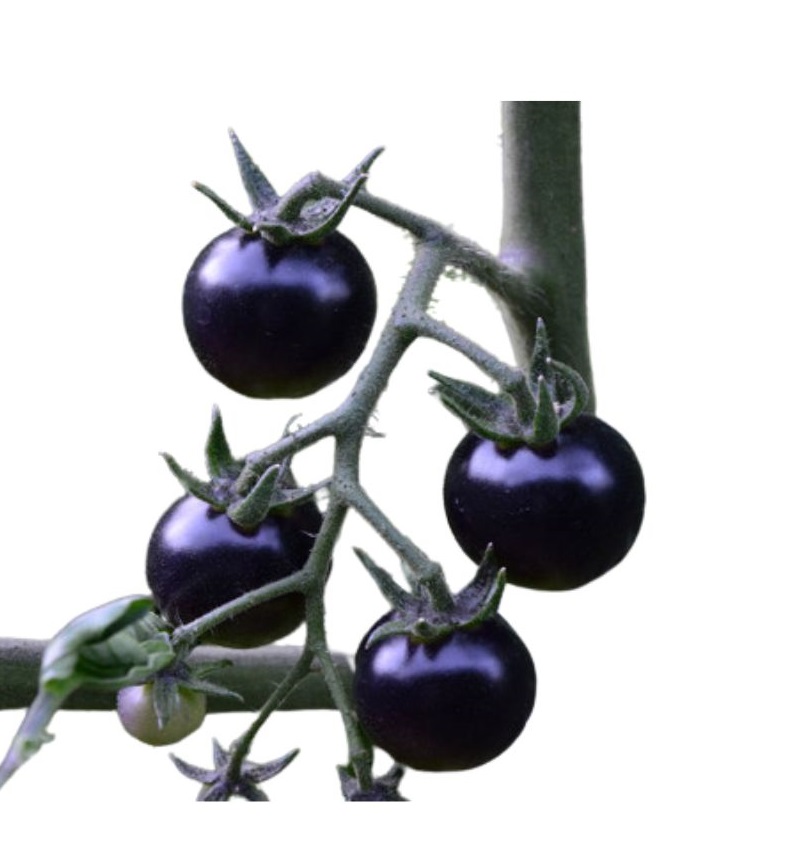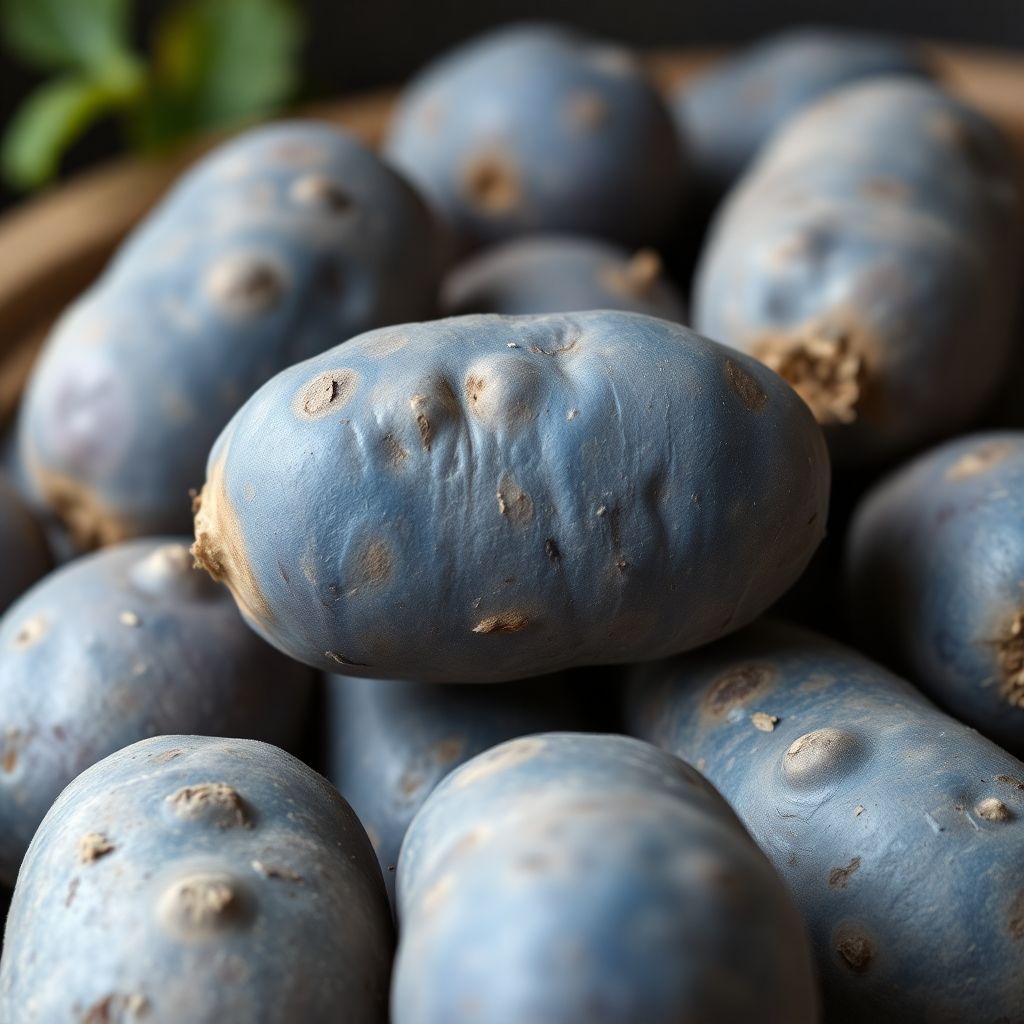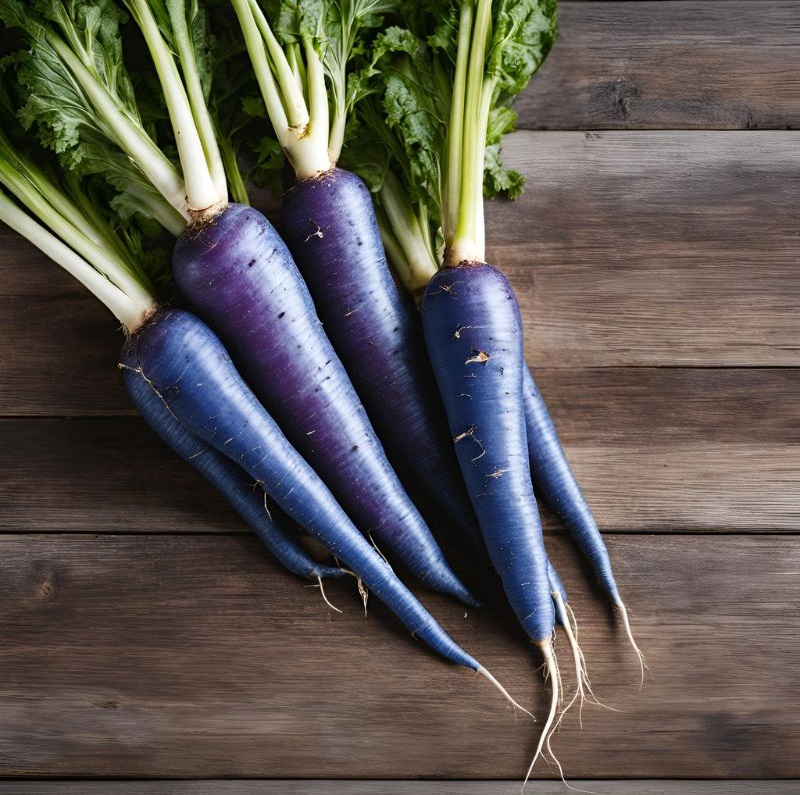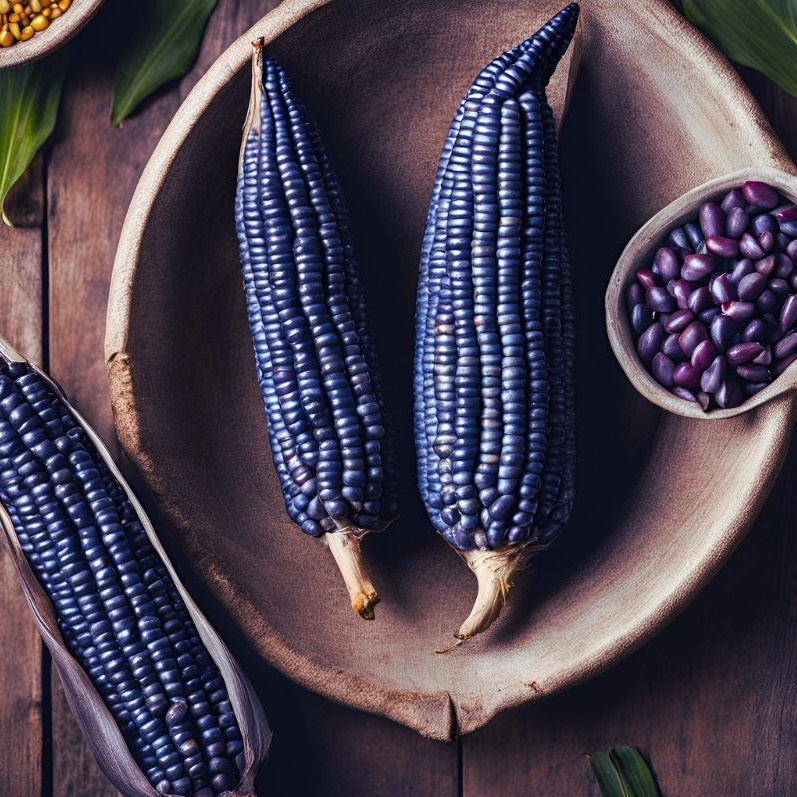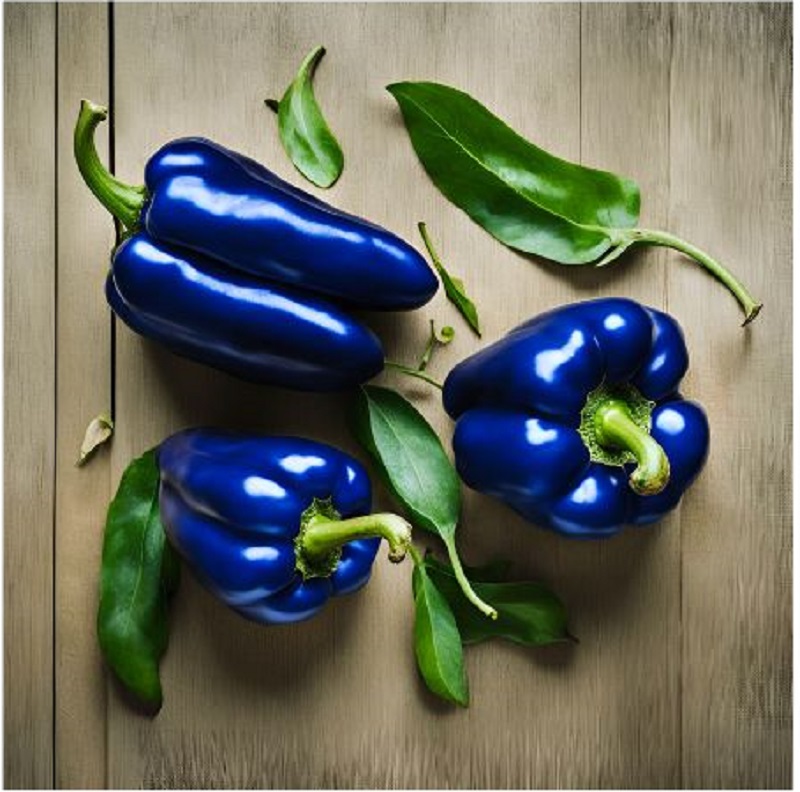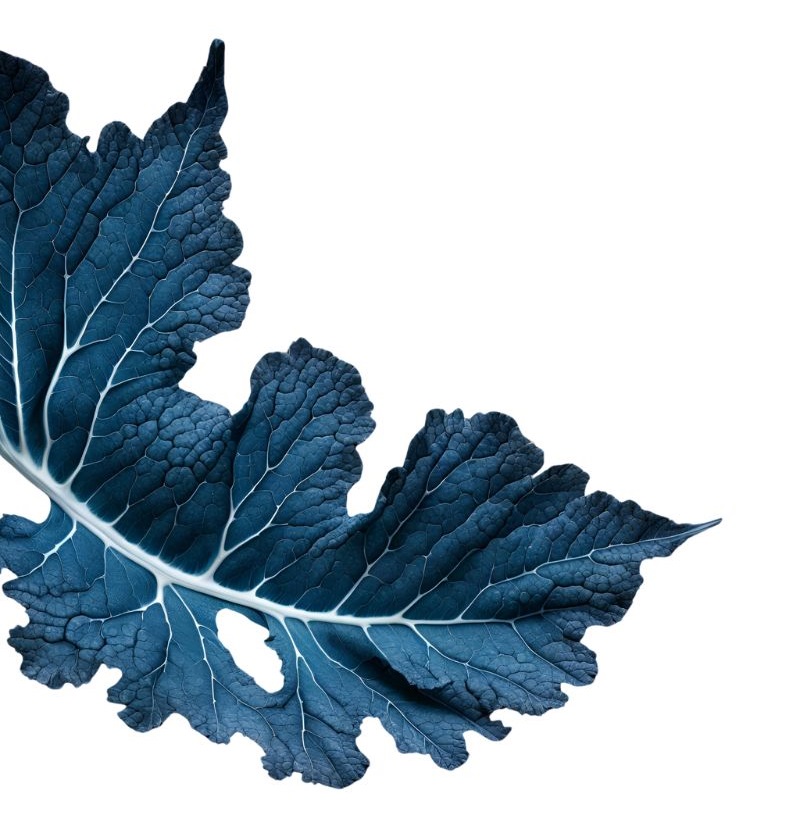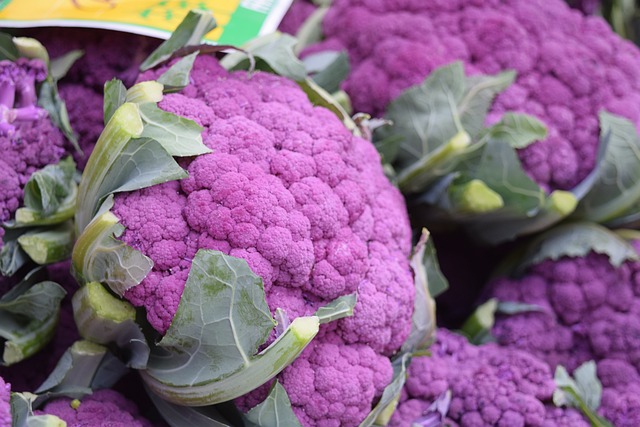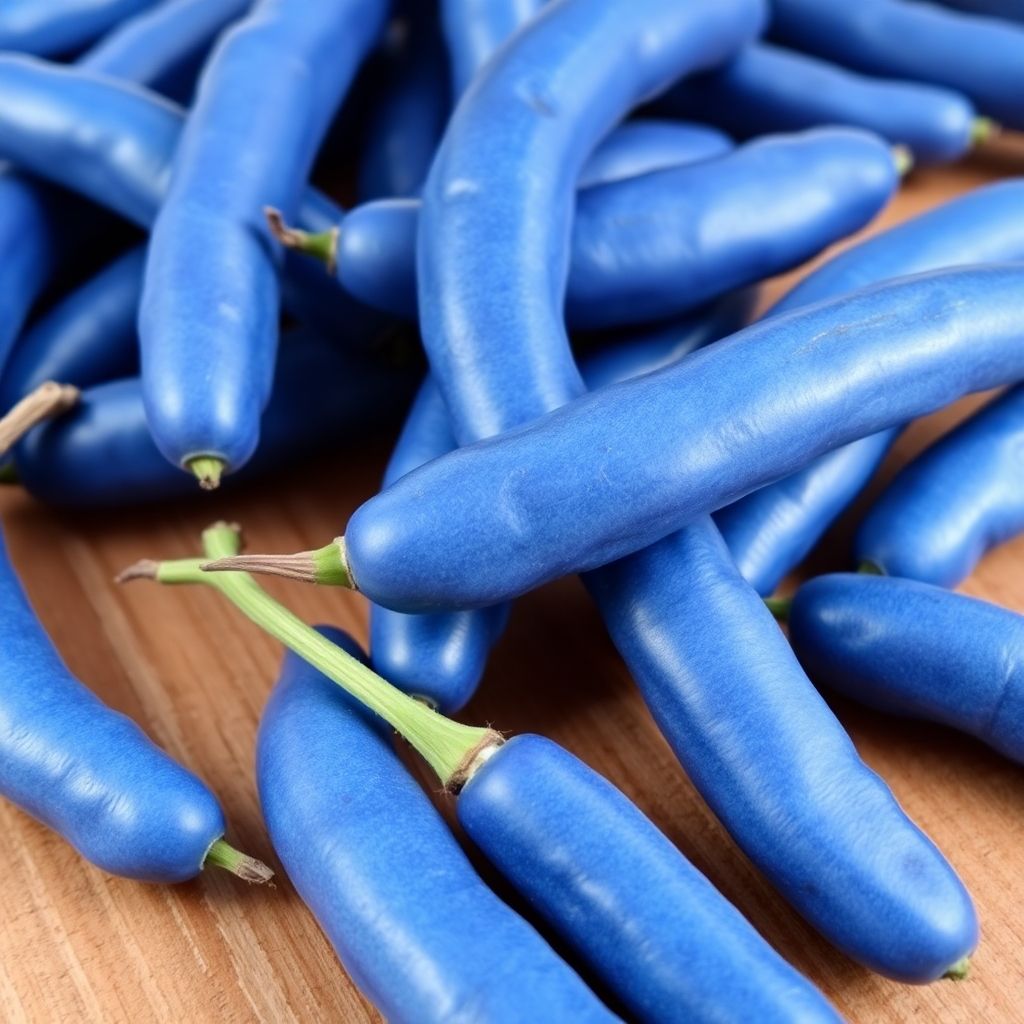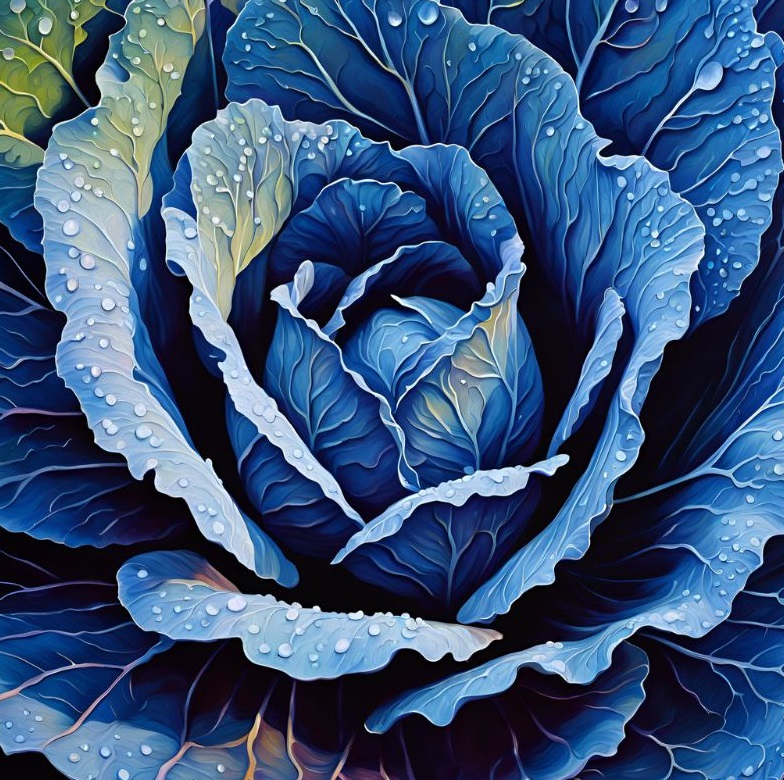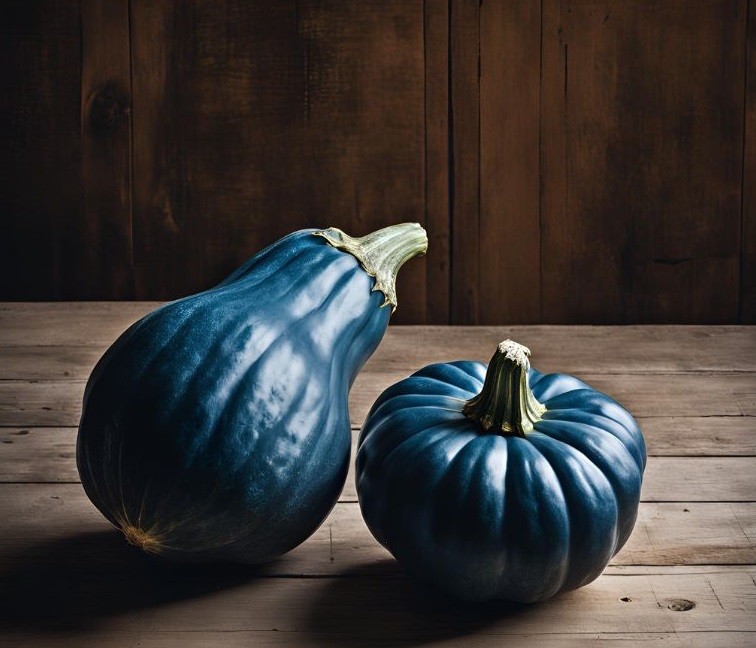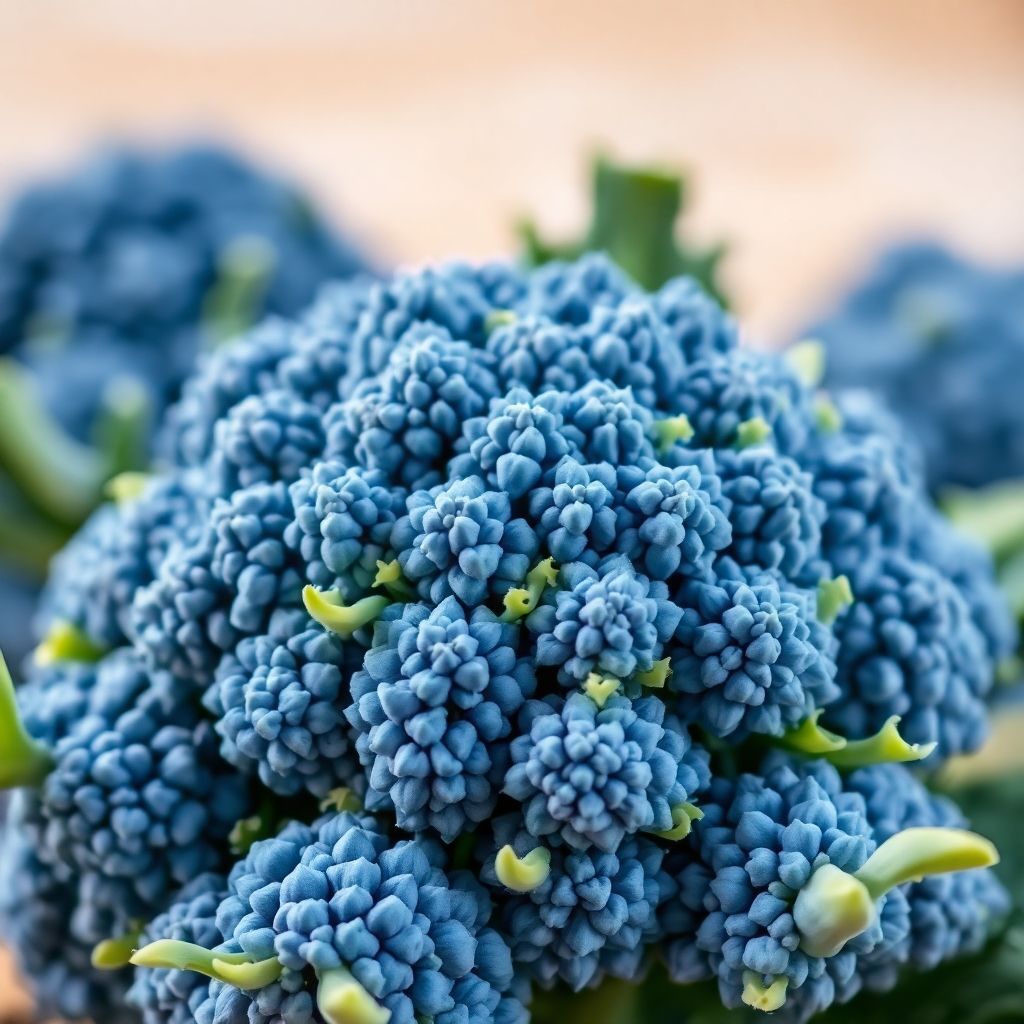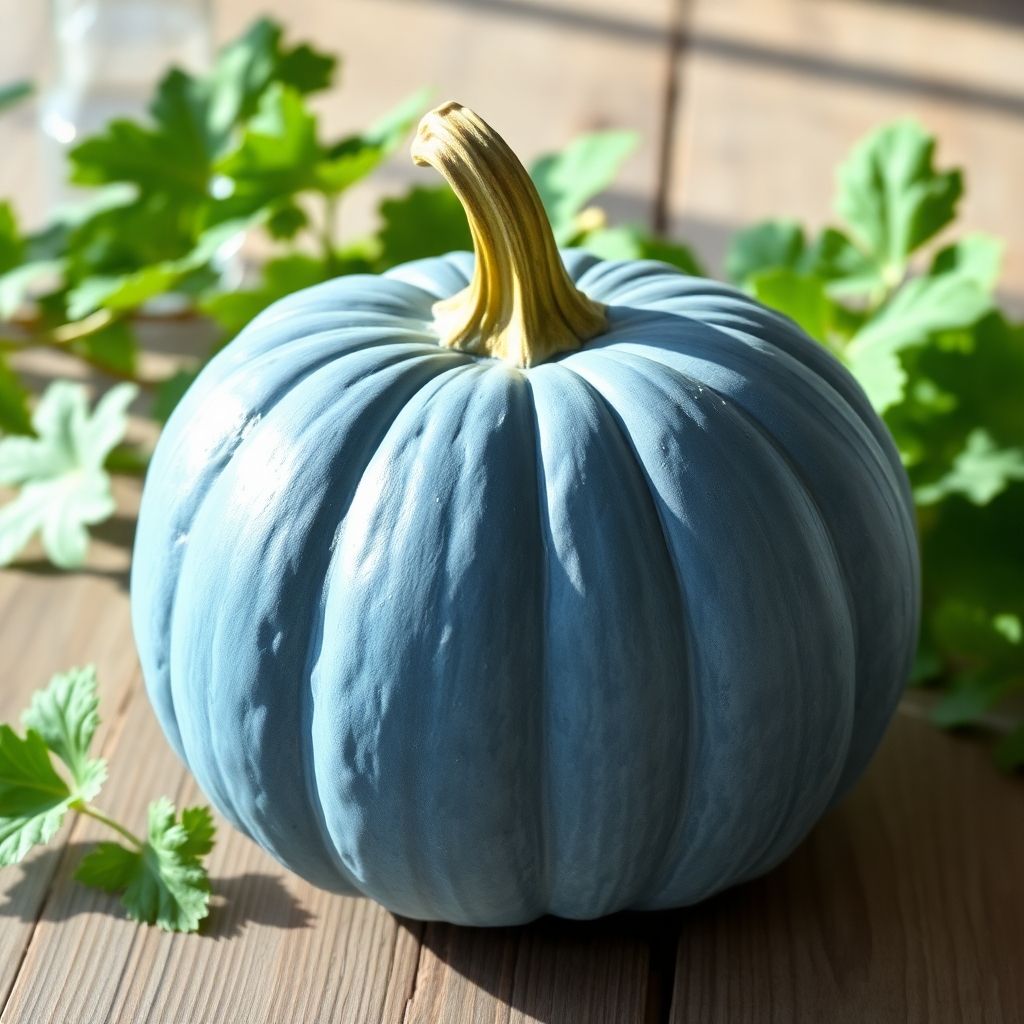Have you ever noticed blue vegetables? They are not just a fun color; they also have many health benefits! This article will introduce you to unique blue vegetables, their uses, and why you should consider including them in your meals. Let’s dive into this colorful world of veggies!
Here is the list of 12 Blue Vegetables
Blue Tomatoes
Blue tomatoes are more than just pretty; they’re packed with flavor and nutrition! These babies are full of antioxidants so add them to everything.
Blue Tomato Varieties
There are several types of blue tomatoes, each with its own taste and look:
- Fahrenheit Blue Tomatoes: These cherry tomatoes have a dark blue skin and sweet fruity flavor.
- Blue Bayou Tomatoes: Sweet and tangy, perfect for salads.
- Indigo Rugby: Sweet and scented, a favorite of many.
Blue Tomato Nutrition
Blue tomatoes are nutrient dense powerhouses. They’re full of vitamins, minerals and antioxidants. Here’s a quick rundown:
Nutrient Benefit
Lycopene Reduces certain cancers
Vitamin C Boosts immune system
Anthocyanins Anti-inflammatory
Use Blue Tomatoes in the Kitchen
Use them in:
- Salads: Toss them in for a pop of color and nutrition.
- Salsas: Their flavor adds a twist to regular salsa.
- Pizzas: Top with them for a colorful and delicious pie.
Blue Potatoes
Blue potatoes are more than just pretty; they’re a powerhouse in the kitchen! These colorful spuds are beautiful and healthy. Blue potatoes are fun to add color and nutrition to your meals!
Blue Potato Varieties
- Adirondack Blue: Blue-purple skin and blue flesh.
- Salad Blue: Highly pigmented, great for salads.
- Magic Molly: Tasty and colorful.
How to Cook Blue Potatoes
Blue potatoes can be cooked like any other potato. Here’s how:
- Boiling: Preserves the color.
- Baking: For a crispy texture.
- Mashing: A twist on regular mashed potatoes.
Blue Potato Benefits
Blue potatoes are full of anthocyanins, powerful antioxidants. They reduce the risk of many diseases including heart disease and cancer. Plus they’re full of fiber, vitamin C and potassium to help with weight loss, immunity and heart health.
Blue potatoes are fun to add color and nutrition to your meals! They can be used in everything from salads to fries, so they’re a great addition to any dish.
Blue Carrots
History of Blue Carrots
Blue carrots were more common than orange ones. Before modern farming, they were the main carrot grown. The orange carrot we know today came from crossing blue and yellow varieties. Isn’t that cool?
Blue Carrot Nutrition
Blue carrots are more than pretty; they’re also nutrient dense! They have anthocyanins, antioxidants that help with many health issues. Here’s a rundown:
Nutrient per 100g
Calories 41
Fiber 2.8g
Vitamin A 835µg
Vitamin C 7.6mg
Blue Carrots
Blue carrots can be used in many recipes. Here are some:
- Carrot Cake: Add a twist to the classic.
- Soups: They’re colorful and tasty.
- Stews: Sweet and crunchy.
Blue carrots are fun to add color and nutrition to meals. Use them like orange carrots. Don’t experiment!
Blue Corn
Types of Blue Corn
Blue corn is a flint corn grown in Mexico and the Southwestern US. Here are some:
- Hopi Blue Corn: Used by the Hopi tribe to make tortillas.
- Blue Flour Corn: Milled into flour for baking.
- Blue Sweet Corn: Eaten fresh or in salads.
Nutrition of Blue Corn
Blue corn is pretty but also nutritious! Here’s a quick rundown:
Nutrient 100g
Protein 9g
Fiber 7g
Antioxidants High
Blue corn has ⅓ more protein than yellow corn! Great for those looking to add more protein to their diet.
Blue Corn in Traditional Recipes
Blue corn is used in many traditional recipes, especially in Mexican cuisine. Here are a few:
- Tortillas: Made from blue corn flour, these tortillas taste different.
- Chips: Blue corn tortilla chips are a snack.
- Soups and Stews: Adds color and flavor to everything.
Blue corn is not just pretty; it’s a nutrition superstar that can add color to your meals!
Blue Peppers
Types of Blue Peppers
Blue peppers are not just pretty; they come in many varieties that can spice up any dish. Some of the most common species that produce blue chilis are Capsicum annuum, Capsicum chinense, and Capsicum baccatum. These peppers can be mild to super hot so are a favorite among chili enthusiasts.
Growing Blue Peppers at Home
Growing blue peppers is fun! Here’s how to get started:
- Choose the Right Seeds: Filius Blue or Blue Jay varieties.
- Plant in Well Drained Soil: Make sure your soil drains well to prevent rot.
- Plenty of Sunlight: Blue peppers love sun so pick a spot that gets at least 6 hours of sun a day.
Blue Peppers in the Kitchen
Blue peppers can add a fun twist to your meals. Here are some:
- Salsas: Chop them up for a colorful and spicy salsa.
- Stuffed Peppers: Use them as the base for stuffed pepper recipes.
- Salads: Add them raw for crunch and color.
Blue peppers are not only pretty but also flavorful! They can be used in many dishes so they’re a kitchen staple.
Blue Kale
Health Benefits of Blue Kale
Blue kale is not just a pretty face in the vegetable world; it’s packed with nutrients! Kale is a superfood that offers a ton of health benefits. Here are some of the top reasons to include it in your diet:
- High in vitamins A, C, and K
- Contains antioxidants that help fight inflammation
- Supports heart health and may lower cholesterol levels
How to Cook Blue Kale
Cooking blue kale can be simple and delicious! Here are a few easy methods:
- Sauté it with garlic and olive oil for a quick side dish.
- Add it to soups for extra flavor and nutrition.
- Toss it in salads for a crunchy texture.
Growing Blue Kale in Your Garden
If you’re interested in growing your own blue kale, here are some tips:
- Choose a sunny spot in your garden.
- Keep the soil moist but not soggy.
- Harvest the leaves regularly to encourage new growth.
Blue kale is a fantastic addition to any garden, providing both beauty and nutrition. It’s a great way to enjoy blue vegetables while boosting your health!
Blue Cauliflower
Nutritional Benefits of Blue Cauliflower
Blue cauliflower is not just a pretty face; it packs a nutrition punch! This vibrant veggie is rich in vitamins C and K, fiber, and antioxidants. Here’s a quick look at its benefits:
- High in antioxidants: Helps fight free radicals in the body.
- Supports heart health: Contains compounds that may lower cholesterol.
- Aids digestion: The fiber content promotes a healthy gut.
Cooking Tips for Blue Cauliflower
When it comes to cooking blue cauliflower, there are plenty of ways to enjoy it. Here are some tips:
- Roasting: Toss it with olive oil, salt, and pepper, then roast until golden.
- Steaming: A quick steam keeps its color and nutrients intact.
- Pureeing: Blend it into soups or sauces for a creamy texture.
Varieties of Blue Cauliflower
There are a few different types of blue cauliflower to explore:
- Graffiti Cauliflower: Known for its striking purple-blue hue.
- Blue Moon Cauliflower: A unique variety with a slightly sweeter taste.
- Purple of Sicily: A traditional variety that turns blue when cooked.
Blue cauliflower is a fun way to add color to your plate while reaping the health benefits of cruciferous vegetables!
Blue Beans
Types of Blue Beans
Blue beans come in various types, but one of the most notable is the Nonna Agnes blue bean. These beans are rare and have a unique flavor. They can be used in different ways, such as:
- Dry beans for soups and stews
- Shelling beans for salads
- Snap beans for fresh eating
Where Blue Beans Are Found:
- North America: Varieties of blue and purple beans like Blue Lake beans are commonly grown in the United States and Canada, especially in home gardens and small farms. They thrive in regions with temperate climates.
- Europe: Blue beans and their purple relatives are also cultivated in Europe, particularly in countries like France and Italy. Varieties like Blue Coco beans are popular in French home gardens and farmers’ markets.
- Asia: Some types of blue or purple beans can be found in parts of Asia, particularly in regions of India and Southeast Asia, where local heirloom varieties of legumes are grown for personal consumption or sold in local markets.
- South America: Certain heirloom varieties with bluish or purple pods, originating from South America, are found in regions like the Andes. These beans are typically grown by indigenous farmers who preserve unique bean varieties.
While the “blue” color may fade when cooked, the raw appearance makes these beans popular for ornamental gardening and unique culinary uses.
Nutritional Information of Blue Beans
Blue beans are not just pretty; they are also packed with nutrients! Here’s a quick look at their nutritional profile:
Nutrient Amount per 100g
Calories 130
Protein 8g
Fiber 6g
Antioxidants High
These rich and flavorful beans are fiber-packed veggies that promote digestive health and are excellent sources of antioxidants that scavenge free radicals in the body.
Recipes with Blue Beans
Cooking with blue beans can be fun and delicious! Here are some ideas:
- Blue Bean Salad: Mix with fresh veggies and a tangy dressing.
- Blue Bean Chili: A hearty dish perfect for chilly nights.
- Blue Bean Soup: Blend with spices for a warm, comforting meal.
Blue beans add color to your plate and bring a wealth of health benefits!
Blue Cabbage
Blue cabbage is often mistaken for red or purple cabbage, but it’s a unique variety all on its own. This vibrant veggie has a distinct greenish-blue color, making it stand out on any plate. The outer leaves are usually more colorful than the inner ones, giving it a beautiful appearance.
Health Benefits of Blue Cabbage
- Rich in nutrients: Blue cabbage is packed with vitamins and minerals.
- Anti-inflammatory properties: It may help reduce inflammation in the body.
- Supports gut health: Regular consumption can enhance digestive health.
How to Prepare Blue Cabbage
- Wash the cabbage thoroughly.
- Chop it into thin slices.
- For a sweet twist, cook it with butter, onions, or even apples.
Blue cabbage is not just pretty; it’s also nutritious! Eating various colorful vegetables, including blue ones, ensures a healthy diet.
Different Varieties of Blue Cabbage
- Blue Vantage
- Blue Lagoon
- Blue Drumhead
Blue cabbage is a feast for the eyes and a powerhouse of health benefits. So, next time you’re wondering what a blue vegetable is, remember that blue cabbage is a delicious option!
Blue Squash
Blue squash is not just a pretty face; it’s a delicious addition to any meal! These unique squashes come in various types, each with its flavor and texture.
Varieties of Blue Squash
- Guatemalan Blue Squash: This oblong squash typically weighs 6-10 pounds and has bright orange flesh. It’s perfect for stuffing or roasting.
- Queensland Blue Pumpkin: Known for its gray-blue skin, this pumpkin has a creamy interior and is great for pies or soups.
- Jarrahdale Pumpkin: Another Australian favorite, it has a lovely blue-gray hue and is versatile in cooking.
Nutritional Benefits of Blue Squash
Blue squash is packed with nutrients! Here’s a quick look at its benefits:
Nutrient Amount per 100g
Calories 45
Fiber 2.5g
Vitamin A 850 IU
Vitamin C 20mg
Cooking with Blue Squash
Cooking with blue squash is easy and fun! Here are some ideas:
- Roast it: Cut into cubes, toss with olive oil, and roast until tender.
- Make soup: Blend cooked squash with broth for a creamy soup.
- Stuff it: Use it as a base for a stuffed squash recipe, adding grains and veggies.
Blue squash is incredibly versatile; it can be used in everything from casseroles to creamy soups. It’s a great way to add color and flavor to your meals!
Blue Broccoli
Blue Broccoli Nutrition
Blue broccoli isn’t just pretty; it’s packed with nutrients! Here’s the breakdown:
Nutrient 100g
Calories 34
Protein 2.8g
Fiber 2.6g
Vitamin C 89.2mg
Vitamin K 101.6mcg
How to Grow Blue Broccoli
Growing blue broccoli is fun! Here’s how:
- Pick a sunny spot in your garden.
- Mix in some compost into the soil.
- Plant seeds 1 inch deep and 18 inches apart.
- Water regularly.
- Harvest when the heads are tight.
Recipes Using Blue Broccoli
Blue broccoli can be used in many recipes. Here are a few:
- Stir-fry with garlic and soy sauce.
- Steam and serve with lemon butter.
- Blend into a creamy soup.
Blue broccoli is not just pretty; it’s a nutritional powerhouse that can help with digestion, immunity and even cancer. Add it to your meals for flavor and health!
Read More About Green Pumpkin
Blue Prince Pumpkin
Cooking Blue Prince Pumpkin
Blue Prince Pumpkins are not just pretty; they’re edible! These pumpkins are flat and blue. They weigh 6-9 pounds and are great for cooking or decorating. Their creamy interior is less stringy than most pumpkins so they’re perfect for many recipes. Here’s how to use them:
- Pumpkin Soup: A classic.
- Pumpkin Pie: Less sweet than traditional pumpkin pie.
- Roasted Pumpkin: Cut, season, roast.
Nutrition of Blue Prince Pumpkin
This pumpkin is not just pretty; it’s nutrient dense! Here’s the breakdown:
Nutrient 100g
Calories 26
Fiber 0.5g
Vitamin A 851 IU
Vitamin C 9mg
Potassium 340mg
Blue Prince Pumpkins are a good source of vitamins and minerals.
Blue Prince Pumpkins are a fun way to add color to your meals!
Other Blue Pumpkins
While the Blue Prince is the star, there are other blues worth mentioning:
- Queensland Blue: Gray-blue skin and orange flesh.
- Jarrahdale: Unique color and flavor.
- Blue Moon: Smaller and perfect for pie.
Use them all the same so go ahead and try!
Wrapping It Up with Blue Veggies
So there you have it! Blue vegetables might not be the most common, but they are fun and tasty. Adding these colorful veggies to your meals can make your plate pop and boost nutrients. Next time you’re at the store, watch for these unique finds. Who knows, you might discover a new favorite! Eating the rainbow is not just a saying; it’s a delicious way to stay healthy. Happy eating!



